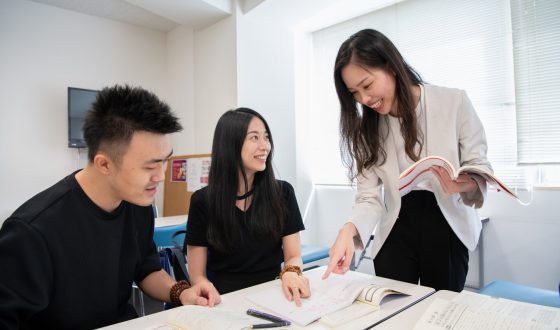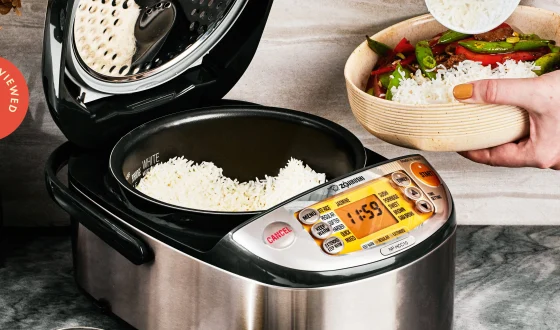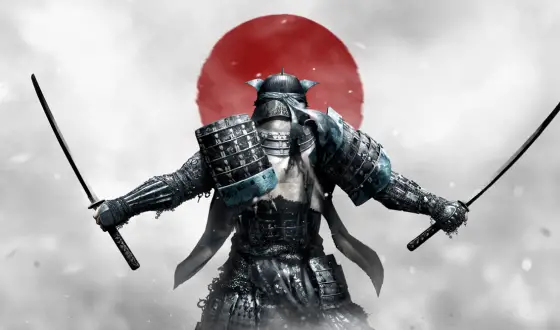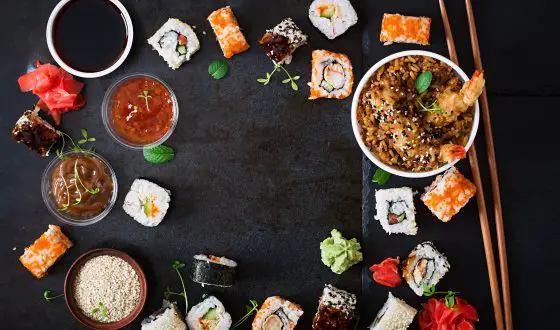How To Eat Ramen With Chopsticks? – A Detailed Guide
Ramen, the beloved Japanese noodle soup dish, has transcended borders and become a global sensation. Its rich broth, flavorful toppings, and springy noodles have captured the hearts and taste buds of people worldwide. Yet, as much as the taste of ramen matters, the way you eat it can also enhance the experience.
One of the quintessential aspects of enjoying ramen authentically is using chopsticks. These slender utensils are not just tools for picking up food; they are an integral part of Asian dining culture, and mastering their use can significantly elevate your ramen-eating adventure.
In this guide, we will explore how to eat ramen with chopsticks. Whether you’re a chopstick novice or looking to refine your skills, we’ll explore the techniques, etiquette, and tips to savor every slurp of your delicious bowl of ramen. So, grab your chopsticks, and let’s embark on a culinary journey through the world of ramen.
What is required in order to eat ramen using chopsticks?
The following are the ingredients you’ll need to make ramen using chopsticks:
- Chopsticks: Ensure that you have a set of clean chopsticks. Pick bamboo, wood, or plastic chopsticks. Verify that there are no trash or sharp edges on them.
- Wet wipes or napkins: Have some wet wipes or napkins on hand to clean up any spills that may have happened during a meal.
- Chopsticks Holder or Holder (Optional): When you’re not using your chopsticks, you can place them on a little stand or holder. Chopsticks are kept cleaner and are kept from rolling off the table thanks to this. It can be a wonderful complement to your food plan even though it is not necessary.
- Ramen Spoon (Optional): Although chopsticks are the preferred method of consuming ramen noodles, a spoon can be handy for savoring broth or specific toppings. Make sure you have a spoon on hand if you prefer to use one.
- Bib or Apron (Optional): Ramen can occasionally be a messy dish, especially if you’re slurping noodles or splashing soup, so you might want to wear a bib or an apron. Consider donning an apron or bib to protect your clothing.
After gathering these, you’ll be prepared to eat your ramen using chopsticks.
When eating ramen, what excellent manners should you keep in mind?
When eating ramen, there are two table manners to remember.
First, avoid “slurping ramen” at all costs.
Making noise when eating not only ramen but also soba and udon is an accepted practice in Japan.
However, it could be disrespectful to the person you share your ramen with if you make too much noise while eating.
“Using the lotus flower” is the second ritual to be aware of.
Let’s now concentrate on the correct way to consume ramen noodles in China, which is where they originated.
In China, where ramen originated, slurping noodles or slurping soup is frowned upon as rude conduct. Chopsticks and a lotus root should be held in your non-dominant hand while eating ramen.
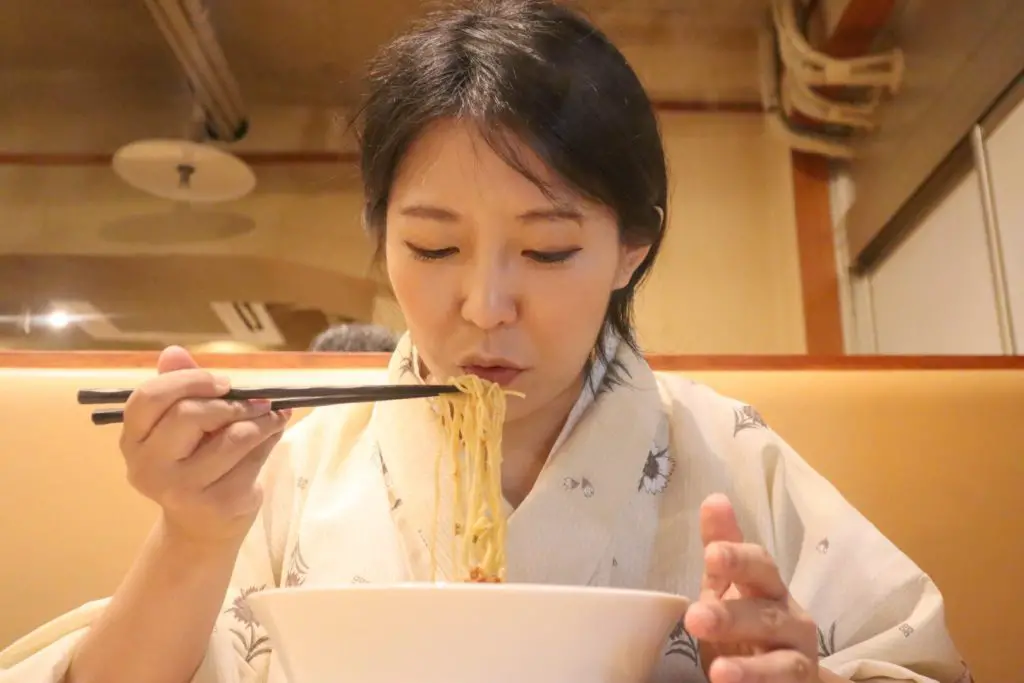
Making noise when eating not only ramen but also soba and udon is an accepted practice in Japan. (Source: Internet)
When using Astragalus, your hand movements become more attractive and you make less noise while eating and no longer have to worry about soup splashing.
It doesn’t matter how you eat ramen if you eat it by yourself or with unimportant pals.
How to eat ramen with chopsticks?
Ramen may be pleasurable and exciting to eat with chopsticks. The following instructions will show you how to eat ramen with chopsticks:
1. Chopsticks should be held between two fingers
You should use your thumb, index finger, and middle finger to hold the top chopstick like a pencil. Put the bottom chopstick on your ring finger and lay it in the space between your thumb and index finger.
If you haven’t used chopsticks before, eating noodles with them can be challenging. Therefore, perfect the chopstick holding technique first.
2. Take a couple of noodles in your hands using the tips of your chopsticks
A large tangle of noodles that you can’t lift out of the bowl will result from grabbing too many noodles.
Each time you pick up additional noodles, you should eat a small amount of it. Align the chopsticks’ tips, then pinch them together to grasp the noodles.
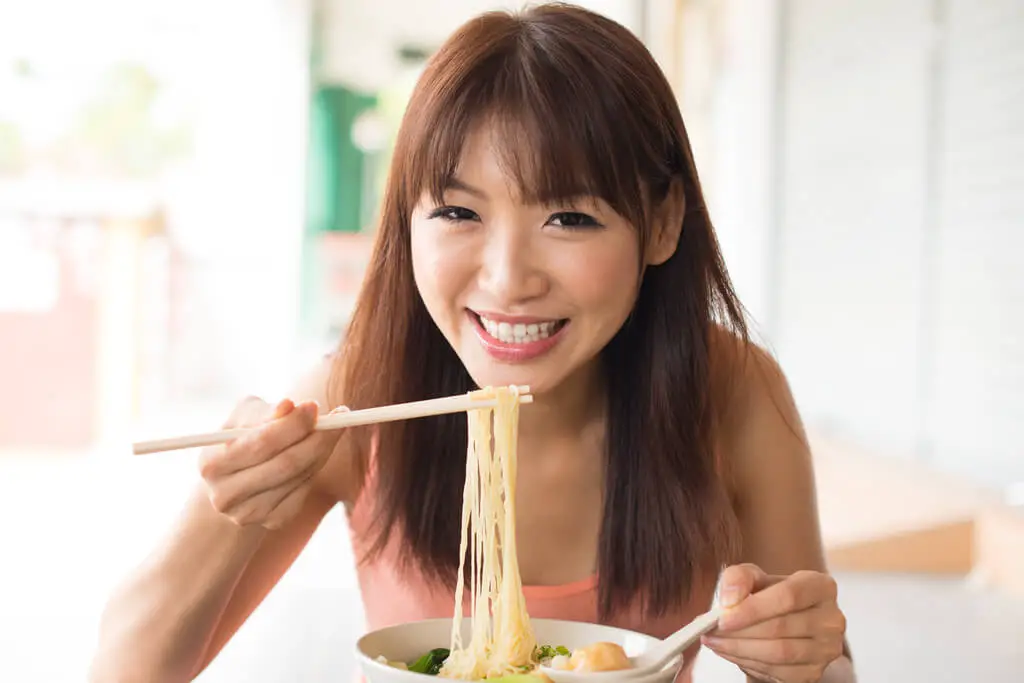
Align the chopsticks’ tips, then pinch them together to grasp the noodles. (Source: Internet)
3. Toss the separated noodles into the bowl after lifting them above it
Your serving of noodles should be briefly dipped back into the soup to absorb any remaining liquid and fat. Noodles should not be twisted in the dish otherwise you risk tangles with the other noodles.
Some ramen variants have separate bowls for the broth and the noodles. To eat this type of dipping ramen properly, simply carry out this procedure, transferring your noodles between the two bowls.
4. Pinch the noodles between your chopsticks and place them in your mouth
Make your lips into the shape of someone preparing to drink something extremely hot. Now swiftly and loudly slurp all of the noodles into your mouth.
Slurping is accepted as natural and even promoted in Japan, despite the fact that it can be deemed impolite in various Western cultures.
You can also like:
- Tiger Vs Zojirushi Rice Cookers: The Ultimate Showdown
- Things to Do in Shinjuku – Top Recommendations on Reddit
- 8 Best Zojirushi Water Boilers: Your Guide To The Best Hot Water Solutions
It is common when eat ramen as a technique to convey that you are appreciating your meal.
Ramen is best savored while still hot and should be consumed rapidly. Slurping also enables you to eat foods at greater temperatures.
5. Take a spoonful of the soup and a few of the garnishes and eat them
Once you’ve finished your noodles, try a bite of pork with some of the broth or one of the other ramen toppings. Follow your instincts; there are no rules when it comes to eating ramen.
Eat the nori, a typical Japanese seaweed frequently offered with ramen, right away to enjoy its flavor and texture before it becomes mushy from the broth.
What not to do when eating ramen with chopsticks
But there are manners while using chopsticks, just as there are when using knives and spoons.
Even if you learn how to use chopsticks correctly, it might be challenging to truly comprehend and execute this skill. Let’s check the rule that you shouldn’t do when eating ramen with chopsticks.
1. Never treat chopsticks like a toy
You might want to pretend to play the drums while you wait for your supper because the chopsticks resemble little drumsticks. Chopstick play, however, is improper behavior.
It’s like a spoon flying into your mouth. Chopstick etiquette is strictly enforced in Japan from a young age, and even young children seldom ever use them for play.
2. The Toki chopsticks
Since they are concerned about the wood chips, they brush the broken points of disposable chopsticks against one another. Pick up the wood chips yourself if you’re worried about them.
3. Votive chopsticks
It may appear courteous to place your chopsticks between your thumb and forefinger while saying “Itadakimasu,” but doing so is considered impolite while using chopsticks.
This technique is known as “worship chopsticks” and is not acceptable. Before taking your chopsticks, clasp your hands and say “itadakimasu.”
4. Pointing with chopsticks
You and the person you are dining with might engage in a stimulating conversation while eating ramen. At that time, “pointing chopsticks” were frequently utilized.
This is done by directing the chopsticks’ tip in their direction. Being careful not to point your chopsticks at anyone is advised.
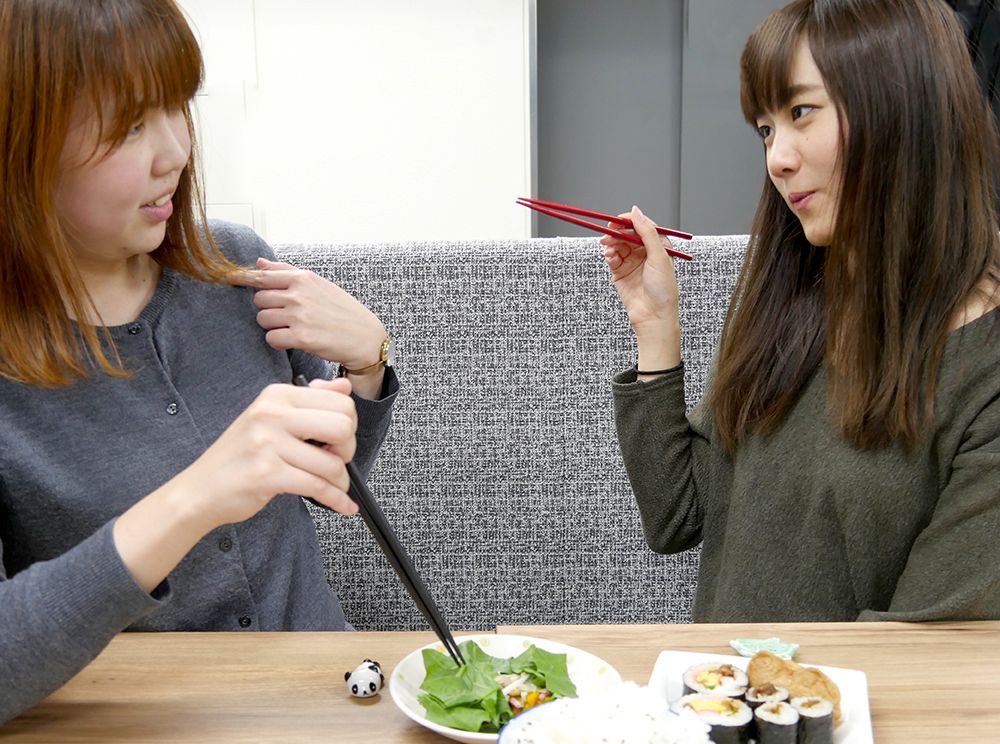
At that time, “pointing chopsticks” were frequently utilized. (Source: Internet)
5. Watari chopsticks
Do you end up arranging your chopsticks in such a way that they create a bridge between the left and right edges of the bowl when you try to put them down during ramen eating?
This signifies that the dinner is finished and is known as “wataribashi.”
If you’ve actually finished your meal and don’t have a chopstick rest, you might not be able to avoid this. However, don’t if you haven’t finished your food yet.
These are the bare minimum manners you should be aware of when using chopsticks; there are many others that you should avoid.
How to choose chopsticks to eat ramen?
Here, we introduced the ritual of using chopsticks when eating ramen. Here we will focus on chopsticks.
When eating ramen, do you ever find yourself slipping and falling? It’s a shame when the soup flies and soils your favorite clothes. Enjoy delicious ramen without stress using chopsticks specifically for ramen.
The price of ramen chopsticks varies depending on the ingredients, etc., but there are varieties from cheap to 100 yen and expensive ones to around 4,000 yen.
If you have special ramen chopsticks, eating ramen will be even more enjoyable.
1. Select a Long-Lasting and Handling Material
Chopsticks can be made of many different kinds of materials. The most typical materials, however, are bamboo, wood, fiberglass, plastic, and metal. Discover the benefits and drawbacks of each substance by reading on!
-
Bamboo Is Heat-Resistant and Environmentally Safe
Bamboo chopsticks are generally healthy for your health. Because of the material’s high level of heat resistance and inherent resistance to germs, it can tolerate high temperatures without bending or melting.
Bamboo is also environmentally friendly because it grows quickly and may rebuild huge forests in a few years. Chopsticks made of bamboo typically have a fairly simplistic form, making them easy to use.
-
Wood Is Beautiful and Resilient
Ebony or jujube wood is frequently used to create high-quality wooden chopsticks. Wood is typically seen as more aesthetically beautiful than other sorts of materials. Chopsticks can be used with hot food without the risk of heat transmission because wood is a low conductor of heat.
However, after extensive usage, particularly if they are routinely washed or left to soak in water, wooden chopsticks can eventually deform or even rot.
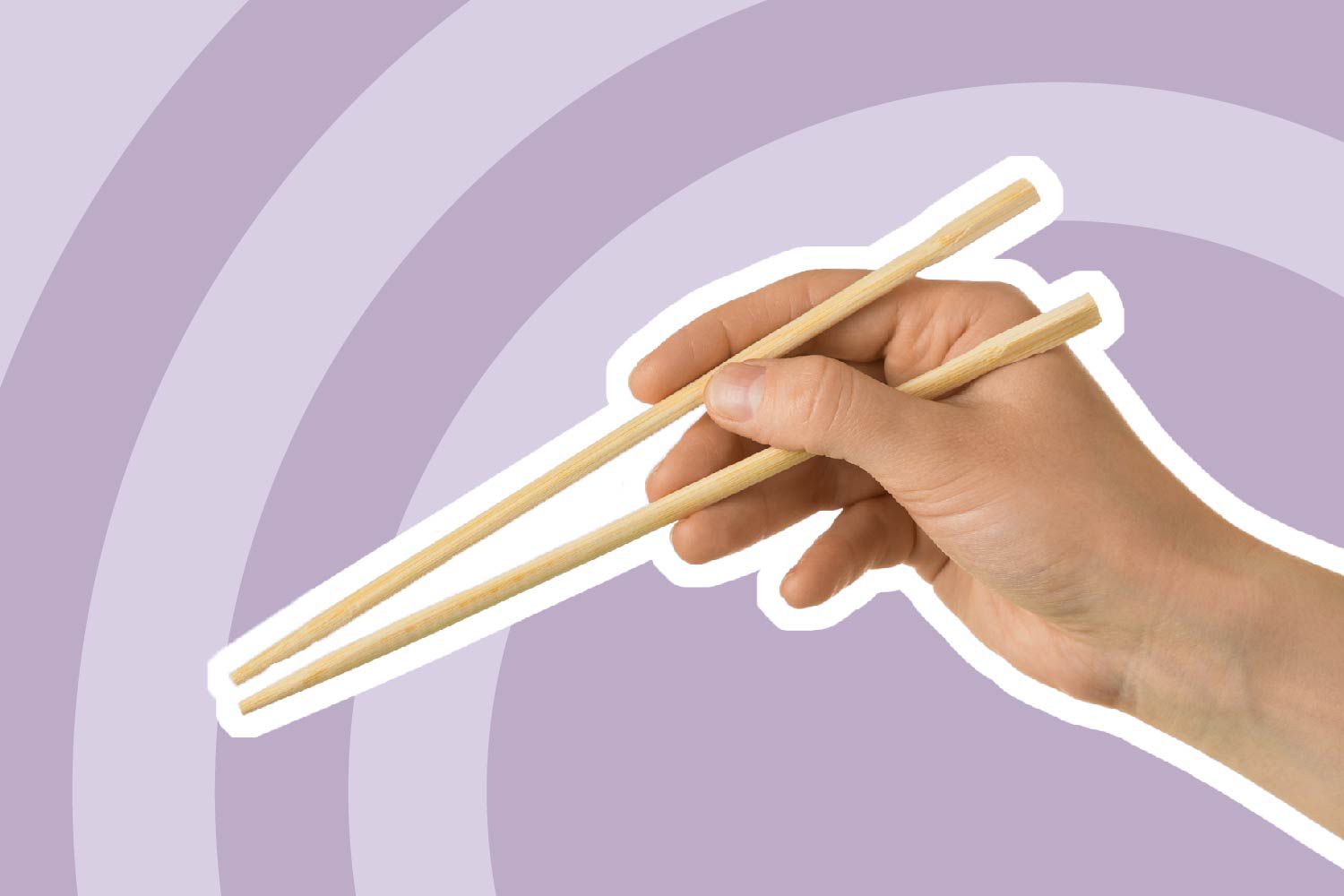
Ebony or jujube wood is frequently used to create high-quality wooden chopsticks. (Source: Internet)
Look for wood that has been treated in a high-quality lacquer to lengthen the life of wooden chopsticks because this is especially detrimental to those that are either very thin or bare.
If you decide to purchase a set of hardwood chopsticks that have been lacquered, make sure the lacquer is food-safe.
In many Japanese and Chinese establishments, uncoated wooden chopsticks are a popular disposable option, but lacquered chopsticks are frequently maintained for frequent usage at home.
-
Metal Can Withstand High Temperatures and Is Simple to Clean
Chopsticks made of non-toxic metals like food-grade 18/10 stainless steel or titanium are generally safe for your health because they don’t react when they come into contact with food.
Additionally, they last longer than wooden, bamboo, or plastic chopsticks. They are simple to clean because you may hand wash or put them in the dishwasher.
Chopsticks are typically not in hot food for long enough for them to get hot to the touch, despite the fact that metal does conduct heat. They are a popular choice for cooking utensils since they won’t distort at hot temperatures.
However, compared to other types, metal chopsticks are typically thinner and more slippery. Using a pair of metal chopsticks to attempt to pick up food may be hard for a newbie. As metal chopsticks are widespread in South Korea, you can frequently encounter them in Korean restaurants.
-
Although eye-catching, plastic is less durable.
Plastic chopsticks might be an excellent option for you if you enjoy using colorful chopsticks. Since plastic surfaces don’t retain flavors or scents, they are simple to clean.
Chopsticks made of plastic should preferably be melamine-manufactured. Melamine products will last longer since they have stronger heat-resistant qualities than other types of plastic.
Plastic chopsticks, however, are not eco-friendly and frequently break after a few uses. You should avoid using them for cooking, especially frying, as they cannot tolerate intense heat and are readily distorted.
Long-term exposure to sunlight might cause them to become sharp and break easily.
-
Plastic is less enduring despite being attractive.
If you like using colored chopsticks, plastic chopsticks can be a great choice for you. Plastic surfaces are easy to clean because they don’t hold onto odors or scents.
Plastic chopsticks should ideally be produced using melamine. Since melamine products are more heat-resistant than other types of plastic, they will last longer.
However, plastic chopsticks are not environmentally friendly and typically shatter after only a few uses. They shouldn’t be used for cooking, especially frying, because they can’t withstand high heat and can easily deform.
It’s possible that prolonged exposure to sunlight will make them brittle and sharp.
2. Select a Length That Is Right for You
Chopsticks used in China, South Korea, and Japan are similar in length to one another. However, Chinese chopsticks are typically the longest, measuring between nine and a half and ten inches.
At about eight and a half to nine and a half inches, Korean chopsticks are longer than Japanese chopsticks but shorter than Chinese ones.
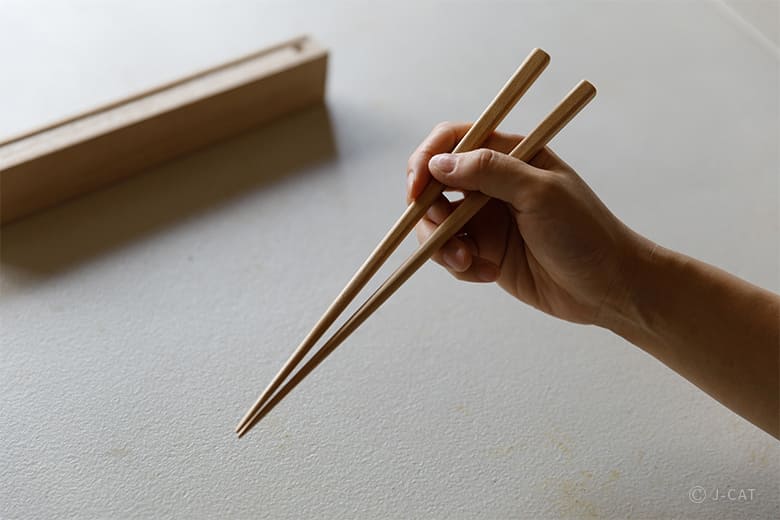
Chopsticks used in China, South Korea, and Japan are similar in length to one another. (Source: Internet)
Chopsticks are normally nine inches long when used in Japanese restaurants, however there are several sizes available for men and women. Men’s chopsticks are typically eight and a half inches long, while women’s chopsticks are the shortest at about eight inches.
3. Based on your eating habits, choose a shape.
Chopsticks come in a variety of designs; some have rounded tips and others have sharp ends. You can find that some chopsticks work better for you than others depending on your routines and preferences.
-
Thick and round handles for comfort, square handles for better grip
A pair of chopsticks with square handles is simpler to hold than one with flat or rounded handles if you’re just learning how to use them and want to perfect your grasp before investing in a fancier set.
Although Japanese chopsticks can have rounded edges on their squares, both Chinese and Japanese chopsticks frequently have square handles that taper down into rounded tips.
Square handles are a fantastic place to start for both adults and kids because they won’t roll between your fingers. However, after prolonged use, the sharp edges of Chinese square chopsticks can pierce your fingertips.
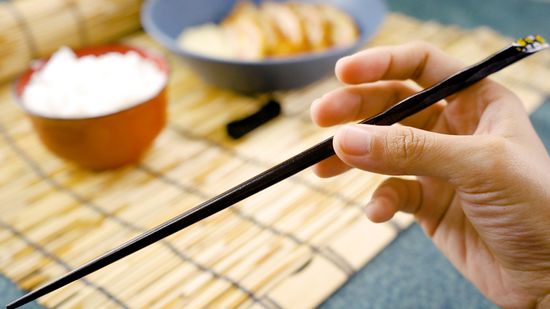
A pair of chopsticks with square handles is simpler to hold than one with flat or rounded handles if you’re just learning how to use them and want to perfect your grasp before investing in a fancier set. (Source: Internet)
-
Precision Designed Thin and Pointed Tips
Traditional Japanese chopsticks feature pointier tips than other varieties of chopsticks, making it easier to pick up little pieces of food with accuracy.
Japanese people typically eat a lot of bony fish, thus sharp and thin chopsticks work much better for them than those with rounded and broad points to remove small bones.
It might be challenging for beginners to use chopsticks with thin, sharp points like those on Japanese chopsticks.
Compared to Japanese or Korean chopsticks, Chinese chopsticks have thicker and flatter tips that are ideal for scooping up bigger pieces of food.
-
For Gripping Slippery Food, Use Tapered or Textured Ends
Consider using chopsticks that are tapered to a blunt, rounded end if you enjoy eating noodles but find it challenging to pick them up.
They provide you with a lot of surface area to hold food, which increases the likelihood that you can pick up more food without slipping.
The tips of many chopsticks, particularly wooden ones, are rough or grooved. As a result, it is simpler to hold onto slippery noodles.
4. For disposable chopsticks, take into account eco-friendly materials.
Disposable chopsticks may save you some cleaning time if you are expecting a large number of guests. Due to their single-use nature, they are not the most environmentally friendly option.
Bamboo is a good option if you have to choose disposable items because it uses less energy to create than wood. Disposable chopsticks may also be unhealthy, particularly for young children and the elderly.
To obtain their white tint, many disposable chopsticks are constructed from low-quality bamboo or wood that has been treated in chemicals for about 20 minutes.
Avoid choosing too-white disposable chopsticks (unless they clearly state they are not chemically treated) while making your selection.
In order to determine whether or not the product has a strong chemical smell, you need also pay attention to reviews about the smell.
5. Search for supplemental features such as sets, holders, or chopstick rests
Examine any additional features, such as sets, holders, or chopstick rests. Chopstick rests are sometimes supplied with chopsticks.
Using a chopstick rest is one technique to ensure that you never stray from the correct protocol when it comes to where to rest your chopsticks while eating or afterward.
This is a tiny item, frequently made of wood or ceramic, that you can rest your chopsticks on when not in use.
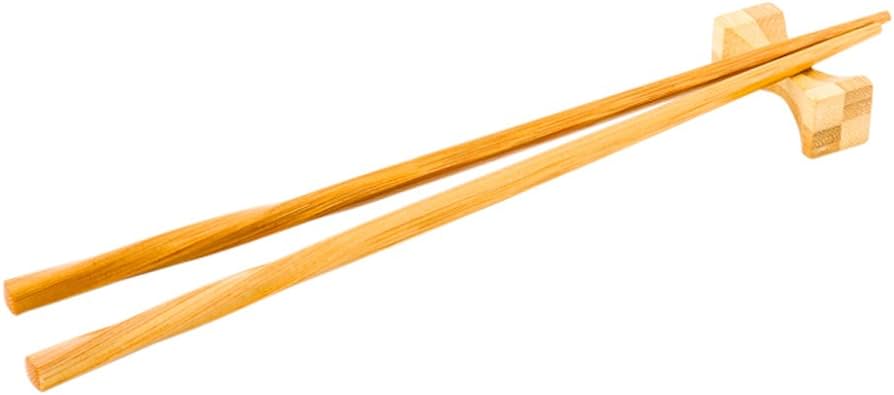
Examine any additional features, such as sets, holders, or chopstick rests. (Source: Internet)
Learning how to handle chopsticks can be particularly challenging for kids, especially if their motor skills are still developing.
In order to offer children learning how to use chopsticks more grip, some of them feature holders on the back that they may insert their fingers into.
A case is essential if you plan to bring your chopsticks to the office or a restaurant. Your chopsticks will stay clean and hygienic while traveling in a case, which will also keep them organized.
You can get bags made of textiles that will wrap around your chopsticks in addition to solid cases made of materials like plastic or wood.
How to keep the chopsticks when eating ramen?
It’s customary to put your chopsticks down when eating ramen, either in between mouthfuls or whenever you’re not actively using them. Here are a few tips for maintaining your chopsticks while eating ramen:
- Chopstick Rest: A chopstick rest or holder is frequently offered by restaurants. It’s a tiny rest or stand made just for holding chopsticks. Chopsticks can be stored on the rest when not in use to keep them clean and prevent them from slipping off the table.
- Bowl Rim: If a chopstick rest is not provided, place your chopsticks on the rim of your ramen bowl. Chopsticks should hang over the edge of the plate when you gently set the tips on the rim. When you need to pick up your chopsticks again, they will be simple to find this way.
- Paper Sleeve: A paper sleeve is sometimes used to individually wrap chopsticks. The wrapper can be used to form an improvised chopstick holder. The wrapper should be folded into a tiny triangle or rectangle and set on the table. Your chopsticks should be resting on the folded wrapper.
Always use clean hands to handle your chopsticks and keep them away from the table and any other unclean surfaces. Additionally, keep in mind that in some cultures, sticking your chopsticks upright in a dish of food is considered disrespectful.
FAQs
1. Can chopsticks be left in ramen?
There are some ramen that seem delectable, but there are also a startlingly large number of folks who decide to stick their chopsticks into their ramen. For those who are unaware, this is insulting since presenting food to the dead involves inserting chopsticks in their mouths.
2. Is using a fork to eat ramen acceptable?
If you are eating ramen in a traditional setting or restaurant, it could be considered impolite to use a fork. This is due to the fact that eating ramen with chopsticks and a ramen ladle is customary. However, if using a fork at home is how you feel most comfortable, you are welcome to do so.
3. Is it ok to consume ramen in its entirety?
Slurping food is typically frowned upon in America, yet it’s accepted and even encouraged when eating ramen.
4. Why do the Japanese slurp their ramen?
Noodle slurping is a tradition not just with ramen but also with soba and udon. Slurping enables you to fully appreciate the aroma as you consume, whether it is cold or heated. It is conceptually comparable to wine tasting when both taste and scent are critical to fully appreciate the wine.
5. How simple are chopsticks to learn?
Chopstick use doesn’t have to be a frustrating process for you. Once you know what to do, using chopsticks to successfully consume food will be as simple as placing them between your fingers. Chopstick mastery can take some practice, but don’t give up.
6. Which are simpler to use, Chinese or Japanese chopsticks?
They are simpler to handle because they are shorter. Japanese typically eat from their own dishes as opposed to Chinese, so it makes sense for the chopsticks to be short. Japanese chopsticks have the sharpest tips, as you’ll observe.
7. Is it impolite in Japan to not finish your ramen?
There is no impolite way to eat ramen; there is no need to overthink it. By all means, indulge in drinking the soup directly from the bowl. Simply savor the bowl, and you’re doing it correctly. And if you can’t finish the soup, don’t worry.
8. Do chopsticks cause you to eat ramen more slowly?
It could depend on how quickly you eat. However, it’s time to think of them as your main utensil for a variety of reasons, including health and mindfulness. When using chopsticks, you are compelled to eat more slowly and deliberately, which frequently results in feeling fuller after consuming less food.
Conclusion
In short, “how to eat ramen with chopsticks?” has been outlined above, and you can perfect your chopstick technique to enjoy your bowl of ramen by following those procedures. Every action, from holding chopsticks properly to flipping and slurping noodles, provides a complete and satisfying dining experience. Chopstick technique will improve with practice and you will learn to appreciate the traditional method of eating ramen noodles. Use chopsticks and enjoy the taste of this traditional dish.



